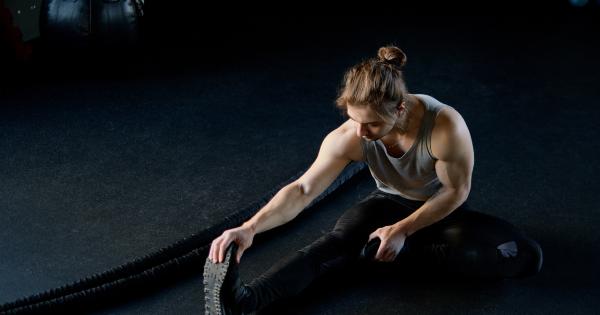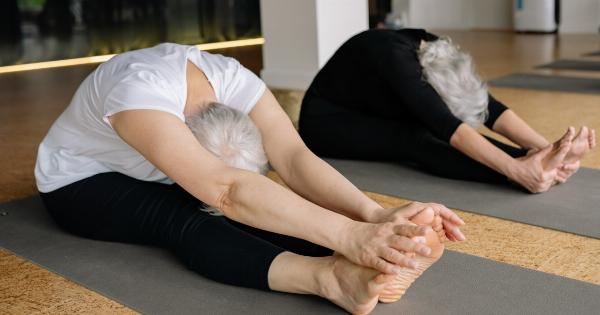Pelvic floor muscles are located in the lower part of the pelvis, and they support the bladder, uterus, and rectum. Weak pelvic floor muscles can lead to bladder or bowel incontinence, lower back pain, and erectile dysfunction.
Pelvic floor exercises, also known as Kegel exercises, are a simple and effective way to strengthen pelvic floor muscles.
1. Kegel Exercise for Women
Kegel exercises for women are simple, and they’re done to improve urinary incontinence, pelvic organ prolapse, and sexual function. The exercise involves tightening and holding the muscles that control your urine flow.
- Locate your pelvic muscles: To identify the pelvic muscles, imagine you are trying to stop the flow of urine. The muscles that contract are your pelvic floor muscles.
- Tighten the muscles: Tighten the pelvic floor muscles to a count of three.
- Relax the muscles: Relax the muscles to a count of three.
- Repeat: Repeat the exercise 10 times for three sets.
2. Kegel Exercise for Men
Kegel exercises for men are done to improve bladder control, erectile dysfunction, and premature ejaculation. Like for women, the exercise involves tightening and holding the pelvic floor muscles.
- Locate your pelvic muscles: To identify the pelvic muscles, imagine you are trying to stop the flow of urine or prevent passing wind. The muscles that contract are your pelvic floor muscles.
- Tighten the muscles: Tighten the pelvic floor muscles to a count of three.
- Relax the muscles: Relax the muscles to a count of three.
- Repeat: Repeat the exercise 10 times for three sets.
3. Bridge Exercise
The bridge exercise strengthens the pelvic floor muscles, lower back, and glutes. It’s a simple exercise that’s done by lying on your back with your knees bent and feet on the floor.
- Lie on your back: Lie on your back with your knees bent and feet on the floor.
- Tighten the pelvic floor muscles: Tighten the pelvic floor muscles and lift your hips until your body forms a straight line from your shoulders to your knees.
- Lower your hips: Lower your hips slowly, ensuring that you keep your pelvic floor muscles tight throughout the exercise.
- Repeat: Repeat the exercise 10 times for three sets.
4. Squats
Squats are an excellent exercise for building strong lower body muscles, including your glutes and pelvic floor muscles. The exercise involves keeping your feet shoulder-width apart and then lowering yourself into a squat position.
- Stand with your feet shoulder-width apart: Stand with your feet shoulder-width apart and place your hands on your hips.
- Lower yourself: Slowly lower yourself into a squat position, ensuring that you keep your back straight and your pelvic floor muscles tight.
- Raise yourself: Raise yourself back up to a standing position.
- Repeat: Repeat the exercise 10 times for three sets.
5. Lunges
Lunges help strengthen the pelvic floor muscles, the lower back, and leg muscles. The exercise involves stepping forward with one leg and then lowering your body towards the ground.
- Stand with your feet together: Stand with your feet together and place your hands on your hips.
- Step forward: Take a step forward with your right leg and lower your body by bending your knees.
- Hold the position: Hold this position for one second before rising back up.
- Repeat: Repeat the exercise with your right leg for ten reps.
- Switch legs: Switch legs and repeat the exercise with your left leg.
6. Reverse Crunch
The reverse crunch is a helpful exercise for men and women to strengthen their pelvic floor muscles. The exercise involves lying on your back with your hands placed under your hips and lifting your legs towards your chest.
- Lie on your back: Lie on your back with your hands under your hips.
- Lift your legs: Lift your legs towards your chest, ensuring that you keep them straight.
- Return to starting position: Return your legs to the starting position while keeping your hips and lower back on the floor.
- Repeat: Repeat the exercise 10 times for three sets.
7. Pelvic Tilt
The pelvic tilt exercise helps strengthen the pelvic floor muscles, lower back, and abs. The exercise involves lying on your back and tightening your stomach and pelvic muscles.
- Lie on your back: Lie flat on your back with your knees bent and feet on the floor.
- Activate your pelvic muscles: Activate your pelvic muscles by tightening your buttocks and lifting your hips off the floor.
- Hold the position: Hold for 5 seconds before returning to the starting position.
- Repeat: Repeat the exercise 10 times for three sets.
8. Hip Flexor Stretch
The hip flexor stretch exercise helps improve mobility and flexibility in the pelvic floor muscles. The exercise involves stepping forward with one leg and then stretching the opposite hip flexor.
- Put one foot forward: Take a step forward with your right foot and keep the left foot back with your left knee touching the ground.
- Lean forward: Lean forward while keeping your left knee on the ground until you feel a stretch in front of your left hip.
- Hold the position: Hold this position for 30 seconds before switching legs.
- Repeat: Do three sets of stretching for each leg.
9. Yoga
Yoga is an excellent form of exercise to strengthen pelvic floor muscles and improve overall health.
Practices such as Pavan Mukhtasana (wind-relieving pose), Baddha Konasana (butterfly pose), and Balasana (child’s pose) can help strengthen the pelvic floor muscles.
10. Massage
Massage therapy can help relieve tension and tightness in the pelvic floor muscles. The therapy involves massaging the inside and outside of the anus and vagina for men and women, respectively.
Also, massaging the lower abdomen with gentle circular strokes helps relieve pain and tension.



























